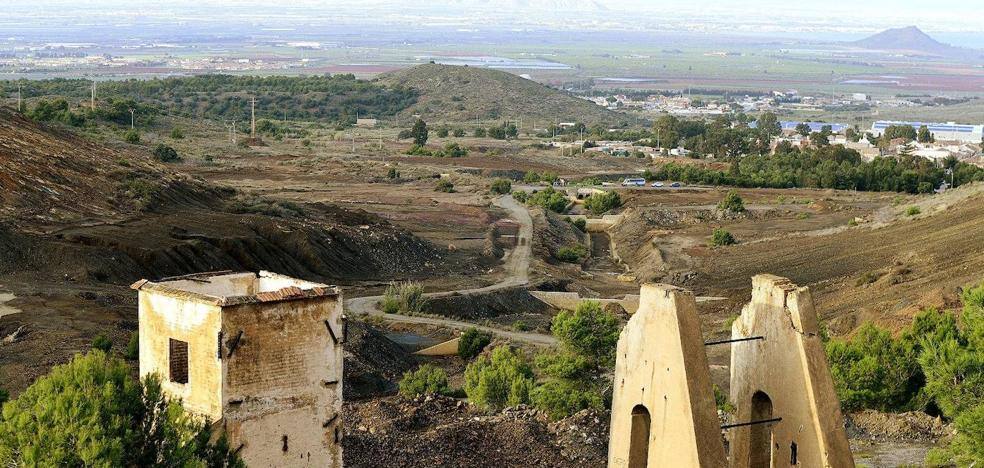Surroundings of the Mar Menor, this Thursday. /
Francisca Baraza highlights the progress to offer a coordinated response given the “advanced degree of degradation” in the ecosystem
The president of the Commonwealth of Canales del Taibilla and coordinator of the Framework of Priority Actions for the Recovery of the Mar Menor, Francisca Baraza, demanded this Thursday “complicity” and “response” from all parties, sectors, administrations and groups involved in the solutions necessary to restore the Murcian salt lagoon with a “look towards the future”.
During his speech at a technical conference on the framework of actions for the period 2022-2026, Baraza acknowledged that in this period it is “clear” that the complete restoration of the ecosystem will not be achieved, but he is confident that this first term will be ” key» to lay the foundations for a second plan and future actions until the complete good condition of the Mar Menor is achieved in a time horizon that is still distant.
In his opinion, to achieve “success” the participation and cooperation between the different local, regional and state administrations is necessary in the coordinated response given the “advanced degree of degradation” in which the Mar Menor is found in “all” their ecological processes and that have generated a “social alarm and a very important social concern as never before known in the Region.”
«We have put ourselves on the map of catastrophes and events derived from mismanagement and use, which has caused the deregulation of the system. There is a need to restore balance », he defended. However, Baraza praised the good coordination and relationship at the technical level between the Ministry, the Region of Murcia and in particular with the municipalities of the Region to face “together” this serious environmental problem.
Technical day held this Thursday in the surroundings of the Mar Menor. /
The coordinator lamented the lack of control accumulated over the years in the development of sectors such as agriculture, livestock, urban planning, mining, tourism and recreation and stressed that everyone has a share of responsibility in the “accumulation of problems” that have resulted in the situation current enclave. “There was an excess in the generation of activities and that has been paid dearly because it generates imbalances,” Baraza pointed out. She also added that “deregulation” and “letting go”, as well as an evident lack of control in the development of each of these sectors, has produced an intensification in the sum of uses. In short, she observes that all this means that the effects of a poorly planned and poorly regulated development trajectory are now being paid.
Precisely this scenario has caused different hypoxia events in 2016, 2019 and the last one, in 2021, led to the implementation, at the initiative of the Ministry for the Ecological Transition and Demographic Challenge in collaboration with the regional government and the municipalities, of a Framework of priority actions directed, based on scientific evidence, to “establish order”, to respect the laws but from listening to civil society, the sectors and with the participation and involvement of all administrations.
Baraza stressed the importance of restoring legality with control mechanisms, reducing illegal irrigation and acting at the origin of the problem that situates not only on the shores of the Mar Menor but in the whole of the catchment basin: the Campo de Cartagena, which occupies some more than 1,300 square kilometers. For this, he stressed the importance of developing solutions based on nature, restoring degraded spaces that are of vital importance for the improvement of the lagoon enclave such as Rambla del Albujón and introducing changes in the agricultural model by 2026.
Specifically, he explained that the framework plan is based on four pillars, the reduction and elimination of polluting contributions; the renaturation and environmental improvement of the catchment basin; monitoring and observation of the state of the Mar Menor and its basin, reinforcing knowledge and establishing an intervention strategy to monitor the actions and a future projection beyond the 2026 horizon.
As a whole, the plan establishes 10 lines of action that total investments of 484.42 million euros for the entire period. Since the implementation of the plan, in February 2022, investments have been committed for a total of 96.91 million, which represent 19 percent of the total. “There has never been an intervention of this amount at the State level, with this impressive deployment of means for such an objective,” said Baraza, who describes as a success the model developed that is now being followed to establish a work program for the Donana environment.
The investments will be made in ten lines of action. Just over 26 million euros will be used for the management and surveillance of the public hydraulic domain, for example, to reinforce surveillance and inspection and control of regulations or to seal off illegal irrigation.
Likewise, for the restoration and environmental improvement in the area of the basin with solutions based on nature, 227.90 million euros will be used in projects such as environmental improvement and the renaturation of the boulevards, such as Albujón or Miranda with green corridors. that provide connectivity to the entire drainage network and especially those affected by the historic mining activity in the area.
On the other hand, in the field of protection of the shores of the Mar Menor and the Mediterranean, close to 28 million euros will be used; while 182 million will be invested in flood risk management and to reduce the polluting load; another 40 million will be used in the restoration of the mining area and 15 million more in scientific research.
“If we achieve all this, we are going to give an impressive change to the entire area,” began Baraza, who does not “demonize” agriculture but rather defends another productive model of it, but more sustainable, for which he wants to reconvert the sector so that be “for the future and beneficial for the territory”.
The Mar Menor is a very fragile lagoon ecosystem that has suffered significant anthropic pressures and as a consequence is currently a highly eutrophic lagoon as a result of the excess concentration of nutrients and organic matter in the aquatic environment. Thus, the CEBAS-CSIC researcher, Gonzalo González Barberá, explained the profound anthropic changes in Campo de Cartagena since the end of the 19th century, which worsened in the 1970s with the intensification of irrigation and from the Tajo-Segura transfer, which resulted in an overexploitation of resources and an increase of up to 10 times the irrigated area. “Campo de Cartagena receives more than twice as much water as it received from precipitation,” he commented.
Thus, by increasing irrigation, the Campo de Cartagena is much more fertilized and obtaining irrigation water with desalination has exacerbated the problem, because the excess salt is poured through brine pipelines into the Lagoon, which in turn exacerbates the multifactorial problem, to the point that in the mid-2000s “more than half of the nitrate came from brine, not from irrigation.”
In 2016, the event known as ‘sopa verde’ took place, which wiped out most of the macroalgae meadows in the lagoon, to which we must add that in 2019 there was a massive mortality of marine fauna due to torrential rains from DANA in the Campo de Cartagena.
For his part, IEO-CSIC researcher Juan Manuel Ruiz focused on the imbalances between the marine and terrestrial ecosystems and exposed the proliferation of opportunistic species, such as certain algae that increase the problem of eutrophication.
#coordinator #Mar #Menor #Office #acknowledges #complete #restoration #achieved #short #term







